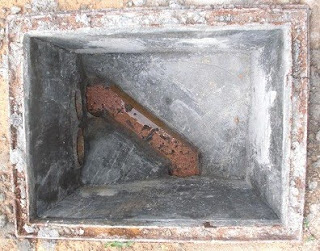Similar to the way a heat sink in a computer's CPU dissipates heat away and cools it, layers of recycled tyres beneath the building's concrete floor absorb heat and keeps the interior of the building cool. See the following simplified diagram:

(Source: The Star, 7 April 2009)
Practice makes perfect.
After the initial experience using tyres to construct the foundation, the team was able to cut the work efforts by half. From constructing the perimeter formworks to the laying of concrete, the team was able to reduce the time taken from 10 to 5 days.

Pic 1: Day 2 - Tyres arranged, strapped and covered with reinforced iron mesh

Pic 2: Day 3 - Corrugated plastic sheets enveloping the tyres; rebars in place for ground beams and concrete slab.

Pic 3: Day 5 - Concrete hardened and perimeter formworks removed

(Source: The Star, 7 April 2009)
Practice makes perfect.
After the initial experience using tyres to construct the foundation, the team was able to cut the work efforts by half. From constructing the perimeter formworks to the laying of concrete, the team was able to reduce the time taken from 10 to 5 days.

Pic 1: Day 2 - Tyres arranged, strapped and covered with reinforced iron mesh

Pic 2: Day 3 - Corrugated plastic sheets enveloping the tyres; rebars in place for ground beams and concrete slab.

Pic 3: Day 5 - Concrete hardened and perimeter formworks removed
Pic 4: Same process applied to the kitchen area i.e. laying and strapping the tyres.

Pic 5: Enveloping the tyres with corrugated plastic sheets, reinforced steel and rebars

Pic 6: After the initial hardening, the bare concrete floor was kept wet to ensure no hairline cracks developed as a result of over drying. (The daily afternoon thunderstorms were very helpful!)














